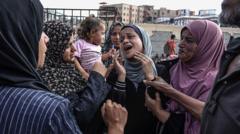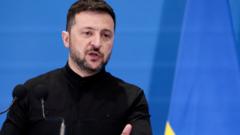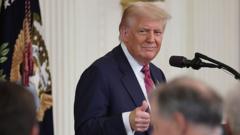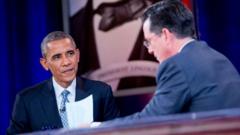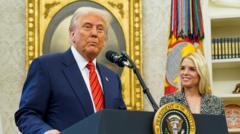An investigation into the recent military strikes on Fordo shows significant changes in the site’s infrastructure as detected by satellite imaging.
**U.S. Strikes Target Iran's Fordo Nuclear Facility: Analysis of Satellite Evidence**

**U.S. Strikes Target Iran's Fordo Nuclear Facility: Analysis of Satellite Evidence**
Satellite images reveal targeted attacks on Iran's Fordo nuclear site, highlighting the U.S. military’s strategic focus on ventilation shafts.
June 22, 2025 - A recent analysis by the New York Times utilizing satellite imagery indicates that the U.S. military targeted the Fordo nuclear enrichment facility in Iran, specifically focusing on locations believed to be ventilation shafts. Originally visible in satellite images from 2009, these structures became hidden by 2011. Experts suggest that attacking such components makes sense due to their vulnerability and potential structural weaknesses. Mark Fitzpatrick, a nuclear expert, noted that damaging the ventilation shafts could compromise the integrity of the facility, effectively enhancing the impact of the strikes.
Reports from U.S. officials confirmed that six B-2 bombers executed the mission using multiple 30,000-pound bunker buster bombs against specific locations at Fordo. Experts from various security think tanks have conveyed that targeting these ventilation shafts might indeed represent a critical strategy, given their significance in the construction and operation of the facility. However, the extent to which the attacks have succeeded in neutralizing the threats posed by Fordo remains inconclusive.
Satellite imagery captured by Maxar Technologies shows a significant amount of debris in the aftermath of the strike, although key support buildings appeared untouched. This situation suggests that the strikes were aimed primarily at underground structures rather than surface infrastructure, as assessed by Joseph Rodgers, a nuclear analyst.
In the days leading up to the strikes, imagery indicated heightened activity at Fordo, with reports of cargo trucks and earth-moving equipment at the site, hinting at preparations for possible combat scenarios. Following the attacks, images reveal that the entrance tunnels are now obscured by dirt, a likely precaution taken by Iran as part of its defensive measures.
This evolving situation draws attention to the potential implications for regional security and the existing nuclear non-proliferation environment, as unfolding events at Fordo continue to put pressure on diplomatic relations involving Iran and other nations. Further assessments are expected to evaluate both the immediate and long-term impacts of the military actions observed.
Reports from U.S. officials confirmed that six B-2 bombers executed the mission using multiple 30,000-pound bunker buster bombs against specific locations at Fordo. Experts from various security think tanks have conveyed that targeting these ventilation shafts might indeed represent a critical strategy, given their significance in the construction and operation of the facility. However, the extent to which the attacks have succeeded in neutralizing the threats posed by Fordo remains inconclusive.
Satellite imagery captured by Maxar Technologies shows a significant amount of debris in the aftermath of the strike, although key support buildings appeared untouched. This situation suggests that the strikes were aimed primarily at underground structures rather than surface infrastructure, as assessed by Joseph Rodgers, a nuclear analyst.
In the days leading up to the strikes, imagery indicated heightened activity at Fordo, with reports of cargo trucks and earth-moving equipment at the site, hinting at preparations for possible combat scenarios. Following the attacks, images reveal that the entrance tunnels are now obscured by dirt, a likely precaution taken by Iran as part of its defensive measures.
This evolving situation draws attention to the potential implications for regional security and the existing nuclear non-proliferation environment, as unfolding events at Fordo continue to put pressure on diplomatic relations involving Iran and other nations. Further assessments are expected to evaluate both the immediate and long-term impacts of the military actions observed.

